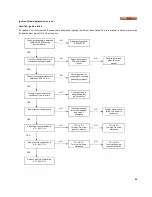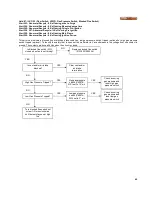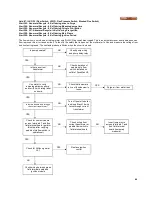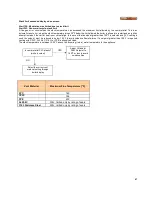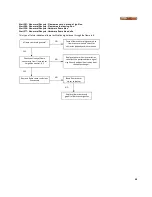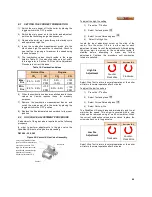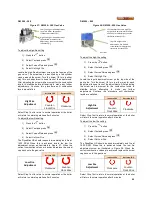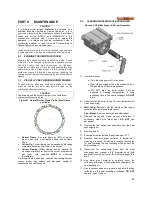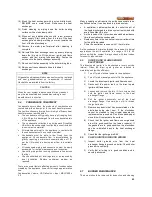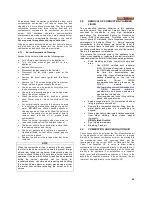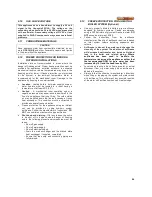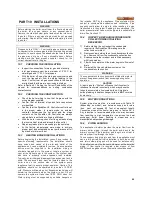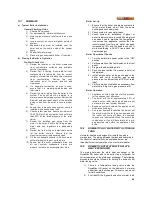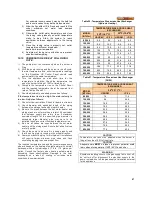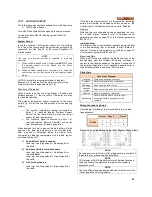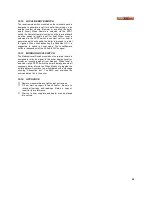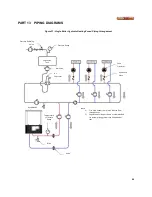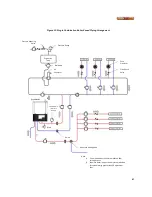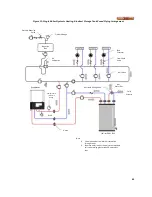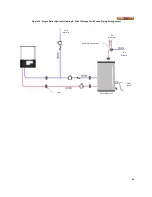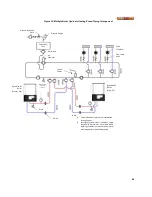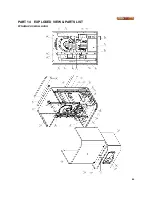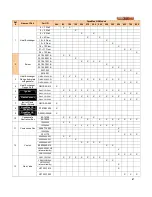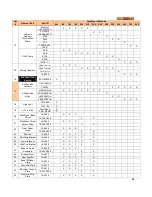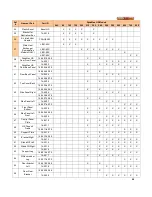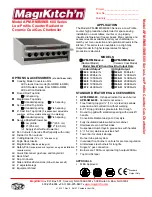
56
10.7
SUMMARY
a) Typical Boiler Installations
General Plumbing Rules
1) Check all local codes.
2) For serviceability, always install unions.
3) Always pipe pressure relief valve to an open
drain.
4) Locate system air vents at highest points of
system.
5) Expansion tank must be installed near the
boiler and on the suction side of the system
pump.
6) Support all water piping.
7) Place drip pan underneath boiler. (if required)
b) Placing the Boiler in Operation
Pre-Start Check List
1) Review the location of the boiler, clearances
from combustible surfaces and available
service clearances.
2) Review Part 2 Venting. Ensure that all vent
components are fabricated from the correct
category of materials with adequate clearance
from
combustibles.
Review
the
vent
termination point for proper location and
clearances.
3) If a separate combustion air pipe is used,
ensure that it is properly sized, sealed and
terminated.
4) Review the water piping from the boiler to the
system. The boiler must be installed in a
primary/ secondary piping system. Review the
diameter and equivalent length of the installed
piping to and from the boiler to ensure proper
flow.
5) Ensure that a properly sized system pump is
installed with an expansion tank.
6) Check system pressure. Ensure a minimum of
18-20 PSIG with the system hot and not more
than 90% of the rated pressure of the relief
valve.
7) Review the installed gas piping from the
meter to the boiler. Ensure that the gas pipe,
meter and any regulators are adequately
sized.
8) Review the field wiring and electrical service
for the boiler controls. Ensure that the
electrical service(s) is adequately sized.
9) Fill the condensate collector with fresh water
until water begins to pour out the drain.
10) Ensure that the boiler condensate drain and
all vent system condensate drains are
properly routed to an acceptable floor drain.
Boiler Set-Up
1) Ensure that the boiler and piping system are
full of water. Bleed all air from the pump
housing and secondary loop.
2) Check system for any water leaks.
3) Check system for installation of glycol or
water treatment where required. Where glycol
has been used to maintain the temperature
rise across the appliance confirm that the
recommended flow for pure water has been
increased by 15% and the head loss by 20%
while maintaining a 30-35
o
F rise across the
heat exchanger.
Boiler Operational Checks
1) Turn the boiler main power switch to the “ON”
position.
2) Verify operation of the text display on the front
panel.
3) Program the adjustable points.
4) Push the reset button if a manual reset error
is displayed.
5) Install a manometer on the gas supply to the
boiler and verify minimum gas supply
pressure as the burner fires at 100% of rated
input.
6) Verify operation of safeties as necessary (low
water cut-off, high limit, gas pressure, etc.).
Boiler Operation
1) Appliance should begin the start-up process
for the sequence of operation.
2) The boiler will fire at approximately 50% of
rated input on initial start-up and adjust input
as required to meet system demand.
3) Based on system demand, the appliance will
modulate accordingly.
4) As system demand is satisfied, the burner will
fire at minimum fire for the given demand and
the boiler will cycle off when the demand
ceases or is interrupted. When this occurs the
combustion air fan will decelerate at a pre-
programmed rate before the appliance shuts
down.
10.8
DOMESTIC HOT WATER WITH STORAGE
TANK
Hot water heaters are designed for installation with a
storage tank. The piping between the tank and heater and
the control of water velocity, as explained below, are
important for correct operation of your hot water heater.
10.9
DOMESTIC HOT WATER WITH PLATE
HEAT EXCHANGER
The piping between the plate heat exchanger in the
DynaMax HS boiler and to an outlet tap is important for
correct operation of the plate heat exchanger. The following
procedure should be followed for setting the domestic hot
water tuning valve:
1) There is a temperature tuning valve inside the
DynaMax HS jacket on the domestic hot water
outlet from plate exchanger. This valve can be set
for field conditions.
2) First identify the highest domestic hot water load.
Summary of Contents for DynaMax DMH081
Page 2: ......
Page 68: ...65 PART 14 EXPLODED VIEW PARTS LIST DYNAMAX HS WALL HUNG...
Page 69: ...66 DYNAMAX HS FLOOR MOUNT...
Page 76: ...73 PART 15 ELECTRICAL DIAGRAMS 15 1 DM 80 299 INTERNAL WIRING DIAGRAM...
Page 77: ...74 15 2 DM 399 800 INTERNAL WIRING DIAGRAM...
Page 78: ...75...



